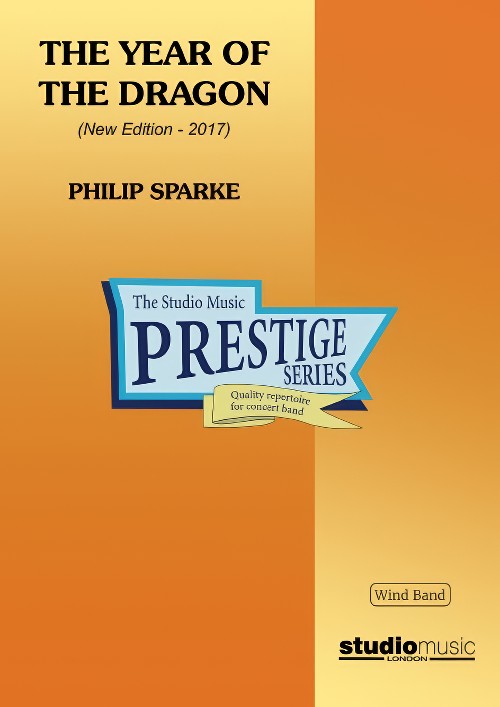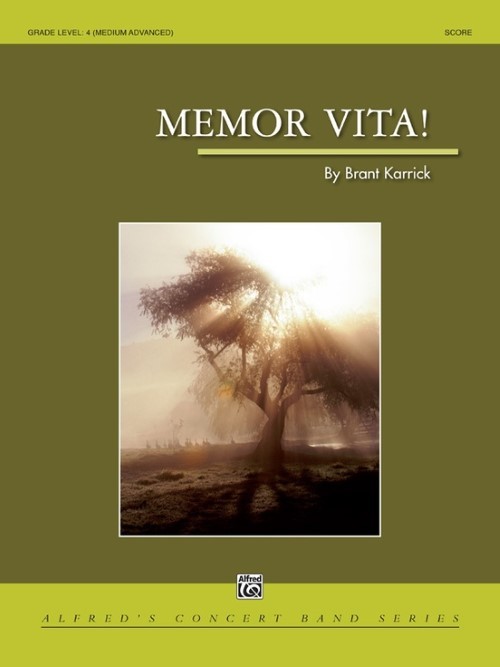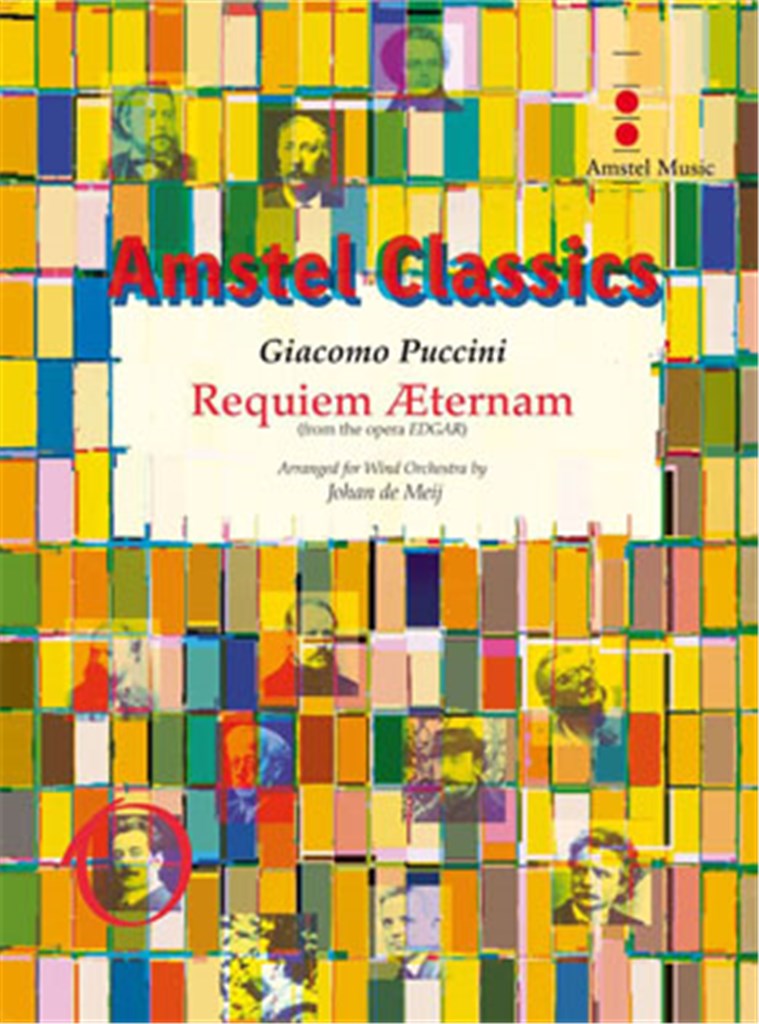Results
-
 £149.40
£149.40Norwegian Dance No. 2 - Alfred Evensen
Alfred Evensen (1883 - 1942) was born in Troms, but moved to Harstad 16 years old to start as a student at The Military School of Music. He was director and chief of the military band in 1918, and worked there for 12 years. In 1930 he was appointedto conductor of the military band in Bergen, and worked there until he was appointed to take over from Johannes Hanssen (Valdres march) as manager and conductor of the military band in Oslo in 1934.With this band he participated in a majorinternational military music collection in Paris in 1935 With a great success. In addition to his work in military music, he was a highly respected conductor of choir and composed, in additionto his compositions for bands, many songs for choir.He died in Oslo, after he was arrested because of his resistance against the German occupation. At his own request he was buried in Harstad, and there is also a statue of him.Norwegian Dance No. 1 and No. 2 dates from 1911 and 1912respectively. They are composed in the style of Grieg's Norwegian Dances, Op. 35, but, unlike Grieg, Evensen has used his own themes for the compositions.
Estimated dispatch 7-14 working days
-
 £78.20
£78.20Cloud(iu)s ... der Wolkenmann - Thiemo Kraas
4 Miniatures for Winds: 1. Wind 2. Storm 3. Rain 4. Sun and Snow There was a little child who enthusiastically told a story ... and a composer who was equally inspired by the child and its story to write these miniatures. At the premier performance of my composition "Arcus" in March 2011, when I explained how a piece about the rainbow came into being, a little girl came up to me and asked: "Thiemo, what about the man in the clouds?" I obviously had forgotten to include him, though he is as the little girl informed me of extreme importance in the sky: "He sits in the clouds and is responsible for the weather. He shakes rain, wind, storm or snow out of the clouds, he pushes them aside to let the sunshine through or he models them into funny figures, making people on earth smile." Fascinated by the girl's ingenuous ideas I created this small composition, sitting in my study and letting my mind wander into the sky. As the man in the clouds naturally has to have a name, I decided to call him "Cloud(iu)s ... man in the clouds". I dedicate this piece to the children of my beginner's band, who show me again and again how wonderful and precious it is to delight in the small things in life ...
Estimated dispatch 7-14 working days
-
 £149.40
£149.40Norwegian Dance No. 1 - Alfred Evensen
Alfred Evensen (1883 - 1942) was born in Troms, but moved to Harstad 16 years old to start as a student at The Military School of Music. He was director and chief of the military band in 1918, and worked there for 12 years. In 1930 he was appointedto conductor of the military band in Bergen, and worked there until he was appointed to take over from Johannes Hanssen (Valdres march) as manager and conductor of the military band in Oslo in 1934.With this band he participated in a majorinternational military music collection in Paris in 1935 With a great success. In addition to his work in military music, he was a highly respected conductor of choir and composed, in additionto his compositions for bands, many songs for choir.He died in Oslo, after he was arrested because of his resistance against the German occupation. At his own request he was buried in Harstad, and there is also a statue of him.Norwegian Dance No. 1 and No. 2 dates from 1911 and 1912respectively. They are composed in the style of Grieg's Norwegian Dances, Op. 35, but, unlike Grieg, Evensen has used his own themes for the compositions.
Estimated dispatch 7-14 working days
-
 £37.95
£37.95The Year of the Dragon (Prestige Concert Band - Score only) - Sparke, Philip
The 2017 version of The Year of the Dragon was commissioned by the Siena Wind Orchestra and given its world premiere on June 17th 2017 in Bunkyo Civic Hall, Tokyo, conducted by the composer.The original wind band arrangement of The Year of the Dragon was made in 1985, a year after the composer wrote the brass band version. At that time he was still learning the intricacies of writing for wind band (and still is!) and in the 32 years which have elapsed since then, his approach to scoring for the medium has developed and, hopefully, improved.Here are the main differences between the two versions:In the 1980's, the wind band movement was much less international than it is now. British wind bands were still to some extent based on the military band tradition of the time, which tended to use rather smaller instrumentation than the then-dominant American university model. The new version embraces a much more international instrumentation, including low woodwinds and string bass, as well as an expanded percussion section.In the original version there was a touch of naivety in the way the composer wrote for the woodwinds; much of their articulation was transferred too literally from the brass version, resulting in some unidiomatic writing, which he has tried to improve in the new version.In addition to the above, Philip's own compositional style has matured and developed in the intervening 32 years. There are some passages in the original which he simply would not write today - not because they are 'wrong', but because his way of writing has changed. The new version is perhaps how he would have written it today, rather than simply dressing the original version in new clothes.The work is in three movements:Toccata opens with an arresting side drum figure and snatches of themes from various sections of the band, which try to develop until a broad and powerful theme from the middle of the band asserts itself. A central dance-like section soon gives way to the return of this theme, which subsides until faint echoes of the opening material fade to a close.Interlude takes the form of a sad and languid solo for alto saxophone. A chorale for the whole band introduces a brief spell of optimism but the saxophone solo returns to close the movement quietly.Finale is a real tour-de-force for the band with a stream of rapid semi-quavers running throughout the movement. The main theme is heroic and march-like but this is interspersed with lighter, more playful episodes. A distant fanfare to the sound of bells is introduced and this eventually returns to bring the work to a stirring close.
Estimated dispatch 7-14 working days
-
 £199.95
£199.95The Year of the Dragon (Prestige Concert Band - Score and Parts) - Sparke, Philip
The 2017 version of The Year of the Dragon was commissioned by the Siena Wind Orchestra and given its world premiere on June 17th 2017 in Bunkyo Civic Hall, Tokyo, conducted by the composer.The original wind band arrangement of The Year of the Dragon was made in 1985, a year after the composer wrote the brass band version. At that time he was still learning the intricacies of writing for wind band (and still is!) and in the 32 years which have elapsed since then, his approach to scoring for the medium has developed and, hopefully, improved.Here are the main differences between the two versions:In the 1980's, the wind band movement was much less international than it is now. British wind bands were still to some extent based on the military band tradition of the time, which tended to use rather smaller instrumentation than the then-dominant American university model. The new version embraces a much more international instrumentation, including low woodwinds and string bass, as well as an expanded percussion section.In the original version there was a touch of naivety in the way the composer wrote for the woodwinds; much of their articulation was transferred too literally from the brass version, resulting in some unidiomatic writing, which he has tried to improve in the new version.In addition to the above, Philip's own compositional style has matured and developed in the intervening 32 years. There are some passages in the original which he simply would not write today - not because they are 'wrong', but because his way of writing has changed. The new version is perhaps how he would have written it today, rather than simply dressing the original version in new clothes.The work is in three movements:Toccata opens with an arresting side drum figure and snatches of themes from various sections of the band, which try to develop until a broad and powerful theme from the middle of the band asserts itself. A central dance-like section soon gives way to the return of this theme, which subsides until faint echoes of the opening material fade to a close.Interlude takes the form of a sad and languid solo for alto saxophone. A chorale for the whole band introduces a brief spell of optimism but the saxophone solo returns to close the movement quietly.Finale is a real tour-de-force for the band with a stream of rapid semi-quavers running throughout the movement. The main theme is heroic and march-like but this is interspersed with lighter, more playful episodes. A distant fanfare to the sound of bells is introduced and this eventually returns to bring the work to a stirring close.
Estimated dispatch 7-14 working days
-
 £73.50
£73.50Memor Vita! (Concert Band - Score and Parts) - Karrick, Brant
There is nothing more precious on this Earth than human life, and every day we wake up to start a new day, we choose how to live our own. Memor Vita! is a musical celebration of life, particularly remembering the life of Zachary Joseph Heringer. Zach was diagnosed with cancer when he was 10 years old. He remained positive throughout the many months of treatments and had strong hopes of being cured. He was a vivacious boy who loved sports, the outdoors, and playing the trumpet in band. He was also an excellent student. He was looking forward to joining his high school band with his older sister, Beth, and his friends. However, the cancer continued to spread and at the age of 14, Zach passed away. He fought his cancer with faith, compassion, and an attitude to never give up, and his steadfast optimism left an indelible impression on all who knew him.Duration: 6.00
Estimated dispatch 7-14 working days
-
 £68.00
£68.00Requiem Aeternam (from Edgar) (Concert Band - Score and Parts) - Puccini, Giacomo - De Meij, Johan
Giacomo Puccini was commissioned to write a second opera after the resounding success of his first, Le Villi. However, the original four-act, grand opera Edgar, to a libretto by Ferdinando Fontana, received a rather lukewarm reception at its premiere in La Scala in Milan in 1889. Initially, the work was only performed three times. Of all the planned performances in the subsequent two years, only one took place, in Lucca, Puccini's birthplace. There, the work was well received. Nevertheless, the composer decided to make drastic changes to Edgar the most radical being the reduction of the opera to three acts, as well as altering a few arias, characters and instrumental parts. In its revised form, the work was even less popular than before. The discarded fourth act later provided material for Tosca (the duet Amoro sol' per te), but Puccini never felt the need to defend Edgar as he did other less fortunate operas, such as La Rondine and Suor Angelica. On a piano excerpt for his female friend Sybil Seligman he even corrupted the title to 'E Dio ti Guarda da quest' opera' (may God preserve you from this opera). This did not prevent Arturo Toscanini performing the Requiem from the third act at Puccini's funeral in Milan Cathedral on 3 December 1924. The Requiem in the third act is being played when the long funeral procession carries the alleged body of Edgar, the confused young man hesitating between the love of the virtuous Fidelia and the exotic Tigrana. The mass hails Edgar as a hero, but a monk claims that he has betrayed his country for a few gold pieces. When the soldiers try to desecrate the body, they discover that the armor contains none. The monk reveals himself as Edgar. He wants to leave with his faithful Fidelia, but the vengeful Tigrana stabs him and kills Fidelia. Edgar grieves over the lifeless body of his beloved, while Tigrana is arrested and the people submerge into prayer. Duration: 3.30
Estimated dispatch 7-14 working days
-
 £68.99
£68.99Requiem Aeternam - Giacomo Puccini
Giacomo Puccini was commissioned to write a second opera after the resounding success of his first, Le Villi. However, the original four-act, grand opera Edgar, to a libretto by Ferdinando Fontana, received a rather lukewarm reception at its premire in La Scala in Milan in 1889 - initially, the work was only performed three times. Of all the planned performances in the subsequent two years, only one took place, in Lucca, Puccini's birthplace. There, the work was well received. Nevertheless, the composer decided to make drastic changes to Edgar the most radical being the reduction of the opera to three acts, as well as altering a few arias, charactersand instrumental parts. In its revised form, the work was even less popular than before. The discarded fourth act later provided material for Tosca (the duet Amoro sol' per te), but Puccini never felt the need to defend Edgar - as he did other less fortunate operas, such as La Rondine and Suor Angelica. On a piano excerpt for his female friend Sybil Seligman he even corrupted the title to 'E Dio ti GuARda da quest' opera' (may God preserve you from this opera). This did not prevent Arturo Toscanini performing the Requiem from the third act at Puccini's funeral in Milan Cathedral on 3 December 1924. The Requiem in the third act is being played when the long funeral procession carries the alleged body of Edgar - the confusedyoung man hesitating between the love of the virtuous Fidelia and the exotic Tigrana. The mass hails Edgar as a hero, but a monk claims that he has betrayed his country for a few gold pieces. When the soldiers try to desecrate the body, they discover that the armor contains none. The monk reveals himself as Edgar. He wants to leave with his faithful Fidelia, but the vengeful Tigrana stabs him and kills Fidelia. Edgar grieves over the lifeless body of his beloved, while Tigrana is arrested and the people submerge into prayer.
Estimated dispatch 7-14 working days
-
 £109.50
£109.50Three London Sketches - David Campo
London is one of my favorite cities in the world, and in 2016 I was invited there to serve as an adjudicator for the London New Year's Day Parade and Gala Concerts. While I was there, I was fortunate to meet and spend time with The Lord Mayor of Westminster Councillor Steve Summers. While his title sounds formidable and intimidating, I found Steve to one of the nicest, most easygoing people I've ever met. And boy, does he love London! He was fond of saying that he had "the best job in the greatest city in the world." He spoke passionately about London and his favorite places in the city, and his enthusiasm was contagious. Some of his favorite places became some of my favorite places, and the inspiration for this piece. I hope that this work not only conveys the beauty and history of these iconic places, but Steve's deep and abiding love for them as well. I. Tower Bridge - The Tower Bridge was built over 120 years ago to ease road traffic while maintaining river access to the busy Pool of London docks. Its giant moveable roadways lift up for passing ships, making it a true engineering marvel. It is also one of the most iconic sites in London, and was used to display the Olympic Rings during the 2012 Olympics. II. St. Paul's (The Whispering Gallery) - The history of St. Paul's Cathedral goes back well over a thousand years, but construction on the current St. Paul's began in 1669 after a fire destroyed the earlier structure. The dome of St. Paul's Cathedral is a whispering gallery; you can whisper against the wall on the inside of the dome and it can be clearly heard on the other side of the dome over 100 ft. away. Imagine the secrets that have passed there... III. Trafalgar Square - The name commemorates the 1805 naval Battle of Trafalgar and is marked by Nelson's Column, a monument to Admiral Horatio Nelson, the hero of the Battle of Trafalgar. It is the heart of London; full of life and constant energy and home to iconic buildings including the National Gallery, St. Martin-in-the-Fields, Canada House and South Africa House. Londoners say that all roads in London lead to Trafalgar Square.
Estimated dispatch 7-14 working days
-
£115.00
The Ocean Beast (CB) - Pimpanit Karoonyavanich
If we hear about a beast, we would imagine a powerful and fierce creature. This composition work depicts a beast who's cursed to live under the ocean. Because everyone thinks that he's a heartless and evil beast, they run away from him every time they see him. Sometimes he appears at the surface of the sea and hope that he would be able to make friends with human. But all he got were severe wounds those made by the sailors who thought that he wanted to attack them. Nobody knows... that all he wants, is just only someone who just treat him like the others, not a beast.
Estimated dispatch 7-14 working days
